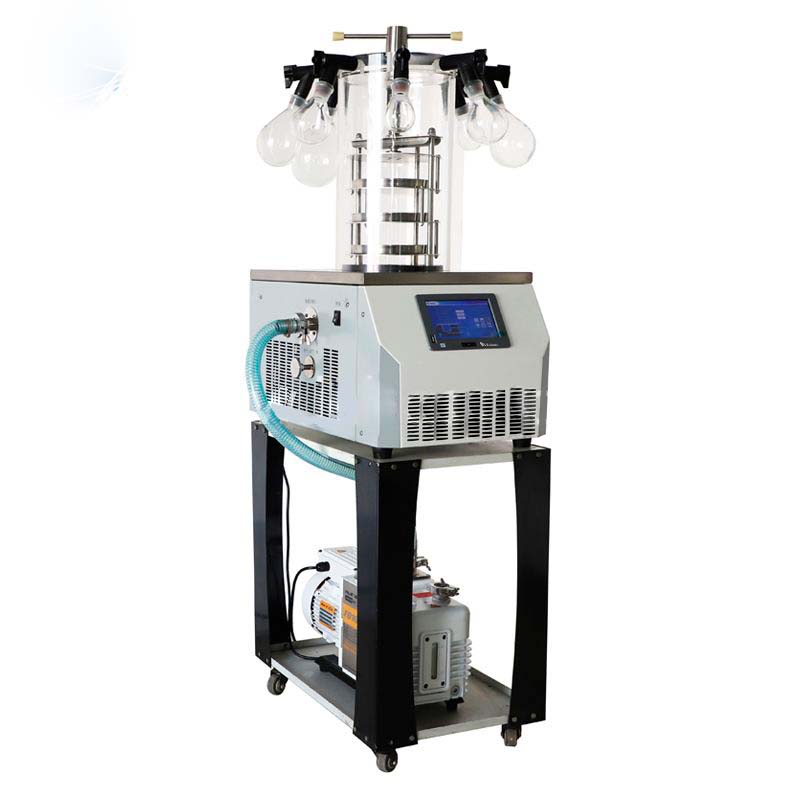Freeze drying is a process also called freeze drying, and it is carried out in specialized equipment known as a freeze dryer. In this process, the product is frozen, by exposing it to cold air, then passing to a vacuum chamber, in which the humidity is sublimated, eliminating it by crystallization using mechanical vacuum pumps.
What is the lyophilization technique?
In this process, water (or another solvent) is separated from a solution by freezing and subsequent sublimation of the ice under reduced pressure. Freeze drying is the most recommended process for drying products and it is the best method for drying organic or inorganic compounds without altering their properties and composition.
It is the best known technique for the conservation and preservation of biological products without preservatives or chemical products, as well as it is the most suitable process to preserve cells, enzymes, vaccines, viruses, yeasts, serums, blood derivatives, algae, as well as fruits, vegetables, meats, fish and food in general.
The lyophilization process is carried out under vacuum and at low temperature to avoid denaturation of the proteins. Food and biological materials such as cells, tissues, bacteria and vaccines become dry products, avoiding their passage through their liquid phase, and consequently enzymatic, biological and chemical changes.
At the laboratory level, for small amounts of sample, round bottom vials, tubes or flasks are used (greater resistance, with the possibility of closure within the lyophilizer). At an industrial level, trays are used for large quantities of material to be lyophilized.
How does a freeze dryer operate?
The procedure for lyophilizing a product or a sample in a lyophilizer consists of several stages:
- Freezing the sample at low temperatures
In this stage, a first dehydration is carried out, with the free interstitial separation of solute occurring. In freeze-drying, the freezing of the products is an important stage since it directly influences the appearance and quality of the final product. Frozen products must have an opaque appearance and maintain it throughout the drying process.
- Drying of the frozen product by sublimation
With the water frozen and the pressure of the product kept below 4.58 torr, when heated, the ice is sublimated into steam without actually melting. By means of a vacuum pump the pressure is kept below the vapor pressure on the ice surface, this vapor is condensed by means of a sepertin, at low temperature.
Desorption
It is obtained by keeping the lyophilizer at low pressure and increasing the temperature to a value close to room.
Product storage
Lyophilized and properly closed products can be stored for long periods of time with the retention of the physical, chemical, biological and organoleptic properties of their original states.
Freeze-drying reduces quality losses caused by chemical reactions, enzymatic and non-enzymatic degradation. Oxidation processes can be controlled by storing lyophilized products in oxygen-impermeable containers. Storing lyophilized products in places with low temperatures avoids protein denaturation.
At Kalstein we are MANUFACTURERS of laboratory equipment of the highest quality and designed with the best technology, at the best PRICES on the market, that is why we invite you to take a look at our product catalog at: HERE


